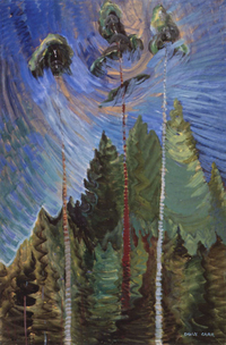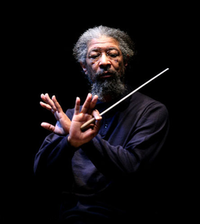
For the full story, click here.
 Emily Carr, Odds and Ends, 1939 Seven works by Emily Carr will be showcased in Germany as part of the upcoming art show Documenta. While Emily Carr is well known here on the west coast this show could help Carr's work achieve international recognition.
For the full story, click here.
0 Comments
I thought I'd share these Dali inspired clocks that I've been working on for an upcoming lesson. Round clocks were made using sculpey and then slowly stretched and pulled to create the final distorted 'melted' look.
I thought I'd share a recent project I have been working on. I had seen information on creating batik pieces without using melted wax and fabric dye. Instead you create a wheat flour paste that acts as a resist. You can find instructions here. The inspiration for my design was Paul Klee's Cat and Bird since it uses simple lines. One of my favourite ways to introduce students to poetry is by combining it with art. I recently used the poem It's Me! by David Harrison found in Heart to Heart: New Poems Inspired by Twentieth-Century American Art to teach students about the importance of punctuation and line breaks when writing poems. In this case, Harrison's poem is written in response to Andy Warhol's Marilyn Diptych. Each line of the poem represents a different Marilyn claiming to be authentic - a great way to discuss the themes of celebrity and mass production in Warhol's artworks. To emphasize the importance of poetry being read aloud, have 3 students from the back, middle, and front of the classroom alternate reading lines of It's Me. I colour coded the poem to make it easier. It may take a few tries before students will 'shout' the exclaimation points, but I've found that once they do, students become engaged with using punctuation and line breaks when writing their own poetry. The other day I read about a recent study that looked at what factors influence students' academic performance. While being conscientious played an obvious role, what surprised researchers was the importance of curiosity. The study describes curiosity as a hunger for exploration. I often find that creating art is often fuelled by this kind of 'hunger' either as a way to answer nagging questions or to solve problems.  image source: www.last.fm Someone who I think of as a curious artist is conductor Lawrence “Butch” Morris. In an interview, click here to watch, Morris discusses what he calls conduction where he communicates with the orchestra using improvised gestures rather than relying on sheet music. The resulting music becomes an exploration of each musician’s own unique musical style. This kind of risk taking where the result is unknown can be unfamiliar territory for some of the musicians. For example at 2:35 of the video Morris tells one musician to pick a note when she states that the music they are playing is not how it was written. So what do you think, do schools encourage enough curiosity in their students? |